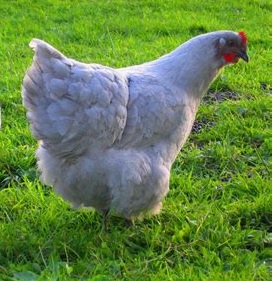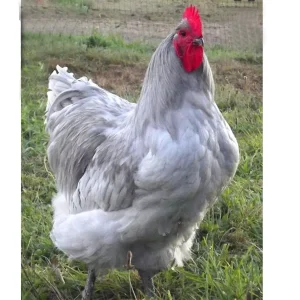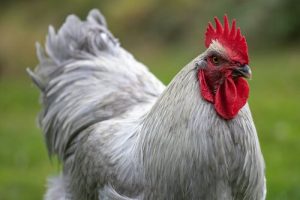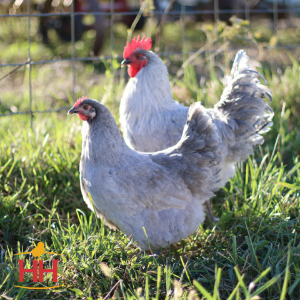Lavender Orpingtons are a beautiful and rare breed of chicken known for their stunning lavender-colored feathers and friendly disposition. They are a sought-after breed among poultry enthusiasts due to their excellent egg-laying ability, gentle temperament, and dual-purpose utility.
As a relatively new variety, Lavender Orpingtons are growing in popularity, making them a prized addition to backyard flocks and breeding programs.
History and Origin of Lavender Orpington

The Orpington breed was originally developed in the late 19th century by William Cook in England. The goal was to create a hardy, productive, and attractive bird. The traditional colors included black, white, blue, and buff.
Lavender Orpingtons are a more recent addition, created through selective breeding to achieve their unique color. The lavender gene is recessive, requiring careful breeding practices to maintain purity and consistency in the plumage.
Physical Characteristics and Appearance
Lavender Orpingtons are large, robust birds with a broad, rounded body and soft, fluffy feathers. Their defining characteristic is their striking lavender or light gray-blue plumage, which gives them an elegant and refined appearance.
They have a single comb, red wattles, and earlobes, along with a calm, docile expression. Their legs are usually clean and slate-colored, complementing their overall look. These birds are truly a showpiece in any flock.
Personality and Temperament
One of the most beloved aspects of Lavender Orpingtons is their friendly and docile nature. They are known to be affectionate, easily handled, and great with children.
Their calm demeanor makes them excellent for families and first-time chicken keepers. They integrate well into mixed flocks and are rarely aggressive. Lavender Orpingtons enjoy human interaction and often follow their owners around, making them wonderful backyard companions.
Egg Laying Ability and Productivity
Lavender Orpingtons are reliable egg layers, producing around 150 to 200 light brown eggs per year. While they are not the most prolific layers, their consistency and large egg size make them a valuable addition to any flock.
They also tend to go broody, meaning they will sit on and hatch eggs, making them ideal for those interested in natural incubation and raising chicks.
Feeding and Nutritional Needs

Like all chickens, Lavender Orpingtons thrive on a balanced diet that includes high-quality layer feed, grains, and fresh greens. Providing access to calcium supplements, such as crushed oyster shells, ensures strong eggshells.
They also enjoy occasional treats like mealworms and vegetable scraps. Access to clean water is essential for their health and overall productivity.
Ideal Living Conditions and Coop Requirements
Lavender Orpingtons prefer spacious and comfortable coops with ample ventilation and nesting boxes.
They require at least 4 square feet of space per bird in the coop and 10 square feet in an outdoor run. Since their feathers are dense, they are cold-hardy but require protection from extreme heat. A well-maintained and predator-proof coop will keep them safe and stress-free.
Health and Common Issues in Lavender Orpingtons
Overall, Lavender Orpingtons are hardy birds, but they are susceptible to common poultry ailments like respiratory infections, parasites, and obesity due to their large size. Regular health checks, a clean environment, and a proper diet help prevent health issues. Providing dust baths and monitoring for signs of mites or lice is also crucial for their well-being.
Breeding and Genetics of Lavender Orpington
Breeding Lavender Orpingtons requires careful attention to genetics, as the lavender color is a recessive trait. Breeding two lavender birds together ensures consistent offspring with the same coloration.
However, introducing new bloodlines periodically helps maintain genetic diversity and prevents health issues related to inbreeding. Understanding the lavender gene is crucial for breeders who want to preserve the purity of this beautiful variety.
Comparison with Other Orpington Varieties

Lavender Orpingtons share many traits with other Orpington varieties, such as their gentle nature, large size, and good egg production.
However, their unique lavender color sets them apart, making them a favorite among poultry enthusiasts. Compared to Buff Orpingtons, they are slightly less common but just as friendly and productive. Their rarity adds to their appeal and makes them a special breed to own.
Pros and Cons of Raising Lavender Orpingtons
Pros:
- Beautiful and unique lavender plumage
- Friendly and docile temperament
- Good egg production with large brown eggs
- Hardy and adaptable to various climates
- Excellent brooders for natural chick-rearing
Cons:
- Slower growth compared to some meat breeds
- Can be prone to obesity if not monitored
- Lavender color requires careful breeding to maintain
- May be more expensive and harder to find

Frequently asked questions about Lavender Orpingtons
Are Lavender Orpingtons good for beginners?
Yes, Lavender Orpingtons are an excellent choice for beginners due to their calm temperament, hardiness, and ease of care.
How many eggs do Lavender Orpingtons lay per year?
They typically lay 150-200 light brown eggs per year, depending on their diet, health, and environment.
At what age do Lavender Orpingtons start laying eggs?
They usually begin laying eggs at around 5-7 months of age.
Do Lavender Orpingtons get along with other chickens?
Yes, they are friendly and social birds that usually integrate well into mixed flocks.
How big do Lavender Orpingtons get?
Hens weigh around 7-8 pounds, while roosters can reach 10 pounds.
Are Lavender Orpingtons cold-hardy?
Yes, their dense feathering helps them tolerate cold climates, but they need proper ventilation to prevent moisture buildup.
Do Lavender Orpingtons go broody?
Yes, they have a strong tendency to go broody and make excellent mothers if allowed to hatch eggs.
Are Lavender Orpingtons rare?
Yes, they are considered a rarer color variety of the Orpington breed and can be harder to find compared to more common Orpingtons.
How much space do Lavender Orpingtons need?
Each chicken should have at least 4-5 square feet in the coop and 10 square feet in the run for comfortable living.
Conclusion of Lavender Orpington
Lavender Orpingtons are an exceptional breed that combines beauty, productivity, and a friendly disposition. Their unique appearance, excellent egg-laying ability, and calm temperament make them an ideal choice for backyard chicken keepers and breeders alike.
While they require some attention to breeding and care, their benefits far outweigh the challenges. Whether for show, eggs, or companionship, Lavender Orpingtons make a wonderful addition to any poultry flock.

